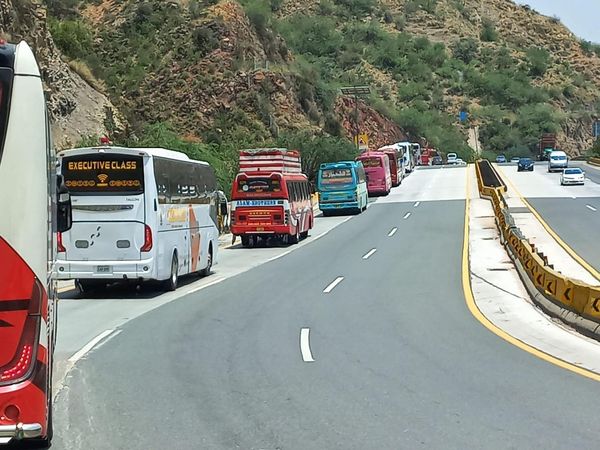Shah Asad Khan
The Islamabad-Lahore Motorway, commonly known as M-2, was inaugurated in 1997 and serves as a flagship project that has transformed Pakistan’s road infrastructure. This motorway has revolutionized travel and transportation, making them more accessible and cost-effective. However, amid its many advantages, M-2 harbors significant dangers, particularly in the Kallar Kahar Salt Range—an area that requires urgent governmental intervention.
The 10-kilometer stretch through the Kallar Kahar Salt Range, once known for its stunning landscape, has unfortunately become notorious for frequent accidents. The region’s captivating salt formations and tranquil vistas are now overshadowed by a grim reality: a high incidence of accidents and fatalities. Since its inception, this segment has claimed many lives, leaving families shattered and communities in mourning. The financial toll, amounting to billions in property damage, adds another layer to this tragedy.
International road safety guidelines typically recommend a gradient of no steeper than 3% to 4% for motorways to ensure vehicle safety, particularly for heavy traffic. In contrast, the Kallar Kahar Salt Range features gradients ranging from 6% to 8%, significantly exceeding these safe limits. This steepness increases the risk of brake failure and catastrophic accidents, resulting in devastating consequences.
A tragic incident on June 09, 2024, underscores the dangers of this perilous segment. A gas bowser lost control on the steep slopes, colliding with a car and igniting a catastrophic fire. Tragically, a doctor, his wife, and their two children perished in the blaze, alongside the crew of the gas bowser. This is just one of many incidents; hundreds of accidents have occurred at this site since M-2’s launch, leading to numerous fatalities and immense property damage.
The Kallar Kahar Salt Range’s most alarming feature is its steep inclines and sharp turns, which violate international safety standards. These hazardous gradients demand exceptional driving skills and impeccable vehicle condition. A momentary lapse in judgment or a minor vehicle malfunction can lead to lethal consequences. Even well-maintained vehicles struggle to maintain control on these treacherous slopes, heightening the risk of accidents.
In response to the alarming situation, the National Highways & Motorways Police (NH&MP) and the National Highway Authority (NHA) have taken several measures to mitigate road crashes in the Salt Range. These include deploying additional NHMP officers and patrol vehicles, utilizing advanced speed-measuring equipment, enhancing road signage, setting up emergency climbs, improved banking on the curves, and initiating a Public Service Vehicle (PSV) convoy system. While these steps are commendable, they serve as temporary fixes rather than long-term solutions.
To ensure the safety of commuters and prevent further tragedies, a more permanent resolution is imperative. This necessitates a thorough redesign of the existing road to eliminate steep slopes and sharp curves. Exploring design alternatives, such as gentler gradients could significantly enhance safety of commuters. Transforming this notorious black spot into a safe passage for travelers is not just a challenge for the government; it is an urgent obligation. By prioritizing impactful design interventions that comply with international standards, we can transform this perilous stretch of motorway into a safer thoroughfare, ultimately safeguarding the precious lives and property of commuters.



